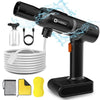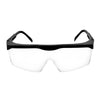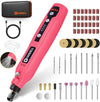What Is The Reciprocating Saw

The reciprocating saw, also known as the electric reciprocating saw or the longitudinal and transverse cutting board saw, is a widely used electric tool mainly used for cutting various materials, such as wood, plastic, metal, etc. Its unique structure and working principle make reciprocating saws play an important role in many fields where other chainsaws cannot function. Next, Hardell will briefly introduce what the reciprocating saw is. I hope everyone can have an understanding of reciprocating saws.

1、 The basic structure and composition of reciprocating saws
From the appearance, a reciprocating saw mainly consists of two parts: the saw blade and the body. The internal and external components of the aircraft body include motors, transmissions, casings, knife lifting mechanisms, switches, and other key components.
Saw blade: The saw blade is the front-end component of a reciprocating saw, directly responsible for cutting work. The quality of the saw blade, including its sharpness, wear resistance, and the shape of the serrations, directly affects the cutting effect. Therefore, people attach great importance to the materials used for making saw blades, and generally choose high-speed tool steel or high carbon steel to make saw blades.
Body: The body is the main part of the reciprocating saw, including components such as the motor, transmission, and casing. The motor is the power source of the reciprocating saw, which drives the large gear to rotate, thereby driving the saw blade to perform reciprocating motion or up and down swing motion. The transmission is a key component that connects the motor and the large gear, responsible for transmitting the power of the motor to the large gear. The casing serves to protect internal components and isolate noise.Related reading:What is mini chainsaw

2、 The working principle of reciprocating saws
The working principle of a reciprocating saw mainly depends on its internal crank connecting rod mechanism and tool lifting mechanism.
Reciprocating motion: The bearings inside the reciprocating saw body combine with the large gears to form a crank, which is connected to the reciprocating rod through a connecting rod. When the motor drives the large gear to rotate, the crank connecting rod mechanism will convert the rotational power into the reciprocating motion of the reciprocating rod, thereby driving the saw blade to perform reciprocating cutting. To ensure the balance of motion, a balance block is also connected to the reciprocating rod.
Up and down swinging motion: The lifting mechanism inside the reciprocating saw is connected to the lifting hook and movable block. When the reciprocating rod undergoes reciprocating motion, the lifting hook will follow along with the reciprocating motion. At this point, the lifting mechanism that is hooked by the lifting hook will also move along, thereby driving the up and down swing of the moving block and reciprocating rod. The amplitude of swing can be adjusted by the end face of the lifting shaft, allowing the saw blade to achieve up and down swing motion to meet the cutting needs of different materials.Related article:Are mini chainsaws any goog

3、 The advantages and application areas of reciprocating saws
Advantage: The biggest advantage of a reciprocating saw is its ability to cut various materials, including wood, plastic, metal, etc. Compared with manual saws, reciprocating saws are time-saving and labor-saving, making them very user-friendly. In addition, reciprocating saws have high cutting efficiency and can significantly improve work efficiency.
Application field: Due to its wide cutting ability and efficient cutting efficiency, reciprocating saws are widely used in various fields. In the field of woodworking, reciprocating saws are used to cut boards, furniture, etc; In the field of metal processing, reciprocating saws are used to cut metal sheets, pipelines, etc; In the decoration and construction industry, reciprocating saws are also used to cut various building materials.

4、 Precautions for purchasing and using reciprocating saws
Purchasing precautions: When selecting a reciprocating saw, it is necessary to pay attention to its power, saw blade length, cutting capacity and other parameters to ensure that the selected reciprocating saw can meet the actual working needs. In addition, it is also necessary to pay attention to selecting well-known brands and products with guaranteed quality.
Precautions for use: When using a reciprocating saw, it is necessary to comply with relevant safety regulations and operating procedures to ensure the safety of oneself and surrounding personnel. Before cutting, it is necessary to check whether the saw blade is sharp and firmly fixed to ensure cutting effectiveness and work safety. At the same time, it is also necessary to pay attention to keeping the cutting area clean and well ventilated, to avoid the harm of dust and harmful gases to health.Related reading:What are the uses of mini chainsaw

The reciprocating saw is a powerful and widely used electric tool. By understanding its basic structure, working principle, advantages and application areas, as well as purchasing and using precautions, one can better use and maintain reciprocating saws, improve work efficiency and safety. If you are missing a reliable reciprocating saw in your tool house, I suggest choosing the Hardell Reciprocating Saw. It can perfectly meet all your work needs and accompany four saw blades to cut objects of different materials. Easy installation and easy maintenance. What are you still hesitating about? Click on the image below to buy.








































